THE SETTLEMENT HOUSES
HOME PAGE
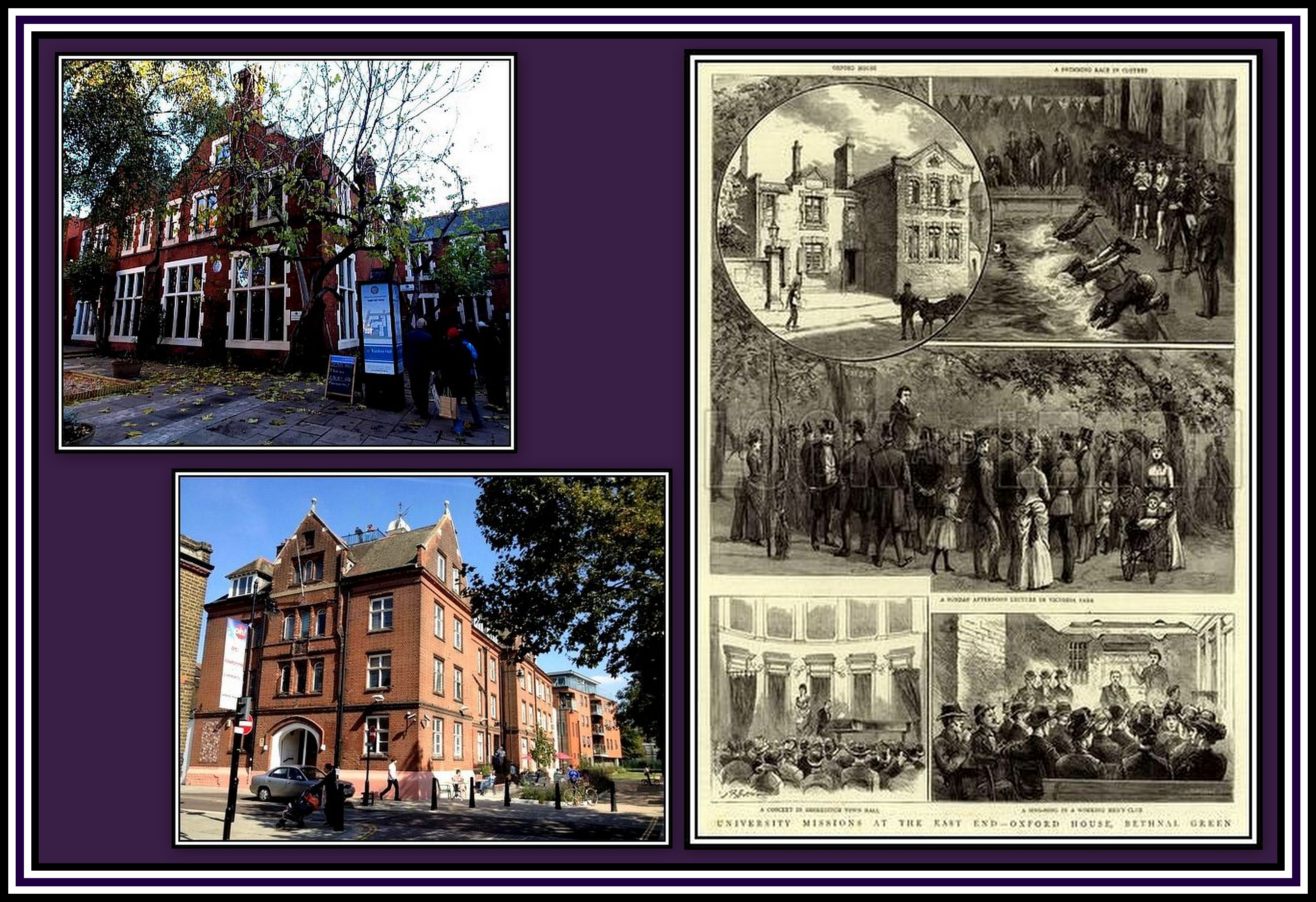 The Original Settlement Houses
The Original Settlement Houses
Upper Left: Toynbee Hall & Lower Left: (The New) Oxford House; both Settlements were opened in 1884
Right: a series of engravings showing the Original Oxford House (top left) and various activities associated with the House. Note the swimming pool (top right); I suspect that this is of Excelsior Hall when it was used as a swimming baths.
Awaiting permission to reproduce the engravings
-oOo-
THE SETTLEMENT MOVEMENT
In the 1870s and 1880s, several Colleges of Oxford and Cambridge Universities founded Missions with a sponsored Curate in the poorer Parishes of the East End and South London. At this time, students were becoming increasingly receptive to new ideas regarding social problems and social service that were proposed by a range of writers and thinkers and which sparked The Settlement Movement. The Movement helped give rise to universities becoming an important source of volunteers to the social institutions that were being formed.
Missions were set up throughout the British Empire by religious groups and sent Missionaries to work in them where their main efforts eventually came to be focused on education, medical help and British middle-class values and so took on a public role in helping to improve sanitation and public health.
Similarly, the Missions in London also grew to have an institutional presence in their communities and offered a wide range of social, recreational and religious services. University students at some of the Colleges were encouraged to visit and volunteer at the Missions during university holidays. In addition, visits to both Oxford and Cambridge were organised for clubs, youth groups and sports teams from the mission districts.
Women were particularly involved in The Settlement Movement and several women’s Colleges founded their own Settlements.
-oOo-
UNIVERSITY SETTLEMENT HOUSES:
SAMUEL & HENRIETTA BARNETT
To learn as much as to teach; to receive as much to give
The Settlement Movement began in the 1880s and peaked in the U.K. during the 1920s. The Movement’s main aim was to encourage society’s wealthy and poor to live more closely together in an interdependent community. To achieve this, Settlement Houses were established in poor urban areas, where volunteer middle-class Settlement Workers lived and shared their knowledge and culture with the poor that lived there. Through these efforts, it was hoped that the poverty experienced by the poor might be alleviated. Settlement Houses provided a number of needed services such as daycare, education and health care, which did much to help improve the lives of the needy.
The most famous of the University Settlement Missions were those of Toynbee Hall and Oxford House in the East End of London.
-oOo-
Samuel Augustus Barnett (1844-1913) was an Anglican Cleric and Social Reformer who served as Canon of Westminster Abbey from 1906 until death.
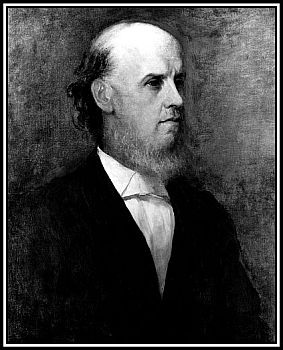 Samuel Barnett, painted by George Frederic Watts (1817-1904)
Samuel Barnett, painted by George Frederic Watts (1817-1904)
In 1873, he married Henrietta Octavia Weston Rowland (1851–1936), an heiress, Social Reformer and author who had been a co-worker of Octavia Hill who was also a Social Reformer and Philanthropist with broad cultural interests.
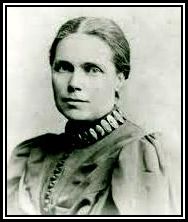 Henrietta Barnett
Henrietta Barnett
In 1873, the Barnetts moved to the Whitechapel Parish of St. Jude’s. Whitechapel was part of the Borough of Stepney and together with the Boroughs of Bethnal Green and Shoreditch were notorious for squalor and overcrowded housing.
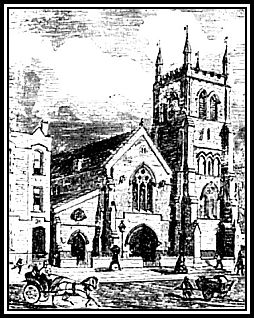 St. Jude’s Church on Commercial Street, which was demolished in 1927
St. Jude’s Church on Commercial Street, which was demolished in 1927
Whitechapel was also infamous for prostitution and other criminal activities and was said, at this time, to be home to over 5,000 prostitutes. Whitechapel was also known to be the area of London were Jack the Ripper roamed and searched out his prey.
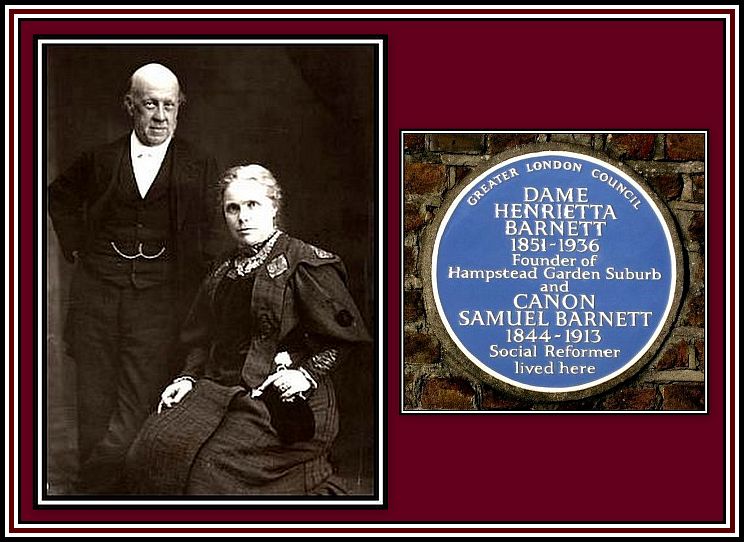
The Barnetts were tireless in their efforts to improve the lot of the poor of the Parish of St. Jude’s. Together they managed to open evening schools for adults and arranged for music and other forms of entertainment to be presented. They also served on various boards and on school committees. They were exponents of Indoor Relief, as opposed to Outdoor Relief since they believed that this encouraged the Pauperisation of the area. They also helped co-ordinate the work of a number of charities working in the area via the Charity Organization Society and the Parish Board of Guardians.
OUTDOOR RELIEF: relief given in the form of money, clothing, food etc with no requirement for the recipient to enter an Institution to receive it;
INDOOR RELIEF: relief was given to those that were willing to enter a Workhouse or Poorhouse.
Henrietta and Samuel Barnett set out their ideas in the book, Practicable Socialism: Essays on Social Reform (1888). Here they described, in detail, their concept that the poverty they had witnessed in Whitechapel was the result of low wages and wrote that:
The body’s needs are the most exacting; they make themselves felt with daily recurring persistency, and, while they remain unsatisfied, it is hard to give time or thought to the mental needs or the spiritual requirements; but if our nation is to be wise and righteous, as well as healthy and strong, they must be considered. A fair wage must allow a man, not only to adequately feed himself and his family, but also to provide the means of mental cultivation and spiritual development.
Henrietta and Samuel Barnett
-oOo-
FROM … SOMETHING MUST BE DONE … TO … WHAT CAN I DO?
In 1875, Samuel Bennett was invited to visit Oxford University by Gertrude Toynbee, whose brother, Arnold Toynbee was studying there. Following this visit, he was asked to return by a number of University Societies to talk about the conditions that he found in the East End. This he did, and began to emphasise the his ideas of what could be done to help alleviate the poverty experienced there.
Barnett felt that benefit would be obtained to both Oxford students and residents of the East End if a group of students were to come and live and work. He advocated the foundation of a Settlement House with sufficient sleeping rooms and large reception rooms where the students would live and offer their help to those in need.
Barnett’s proposals were met with an immediate response: some positive and some negative.
The major criticism of Barnett’s proposal was offered by a group that was led by the Warden of Keble College, Edward Stuart Talbott (1844-1934). The group felt that any Settlement should be attached to a Parish and be an extension of its social work within the Church of England. The group felt that such a venture should function less as an independent and non-denominational institution, as Barnett had proposed.
Despite this opposition, by January 1884, various University authorities agreed to take the necessary steps to provide such a Settlement House in the East End and a committee was formed to receive the names of those students wishing to offer their services. The committee was in agreement that The Reverend Samuel A. Barnett be offered the post of Head of what was to become Toynbee Hall.
-oOo-
In April 1884, The Reverend George Knight Bruce (1853-1896), the Vicar of the Parish of St Andrew at Bethnal Green, announced that a Settlement House was presently being started in the Parish. Edward Stuart Talbott, the Warden of Keble College said that though the basis of the scheme was to be religion and Christianity, anyone would be welcome to join in the work including those who could scarcely define their attitude to Christianity of the Church of England.
And this marked the beginning of Oxford House …….. religious in motive while secular in working.
——oooOOOooo——
——oooOOOooo——
Readers can TWEET their LIKES & DISLIKES to me at
or
make comments on the Website’s FACEBOOK PAGE
or
consider leaving a Comment below.
——oooOOOooo——
Click here to GO to TOYNBEE HALL
——oooOOOooo——
Click here to GO to THE FIRST OXFORD HOUSE
——oooOOOooo——
Click here to GO to
THE NEW OXFORD HOUSE IN BETHNAL GREEN
——oooOOOooo——
Click here to GO to OXFORD HOUSE & ENTERTAINMENT
——oooOOOooo——
Click here to GO to OXFORD HOUSE & THE WAR YEARS
——oooOOOooo——
Click here to GO to OXFORD HOUSE TODAY
——oooOOOooo——
Click here to GO to the TABLE OF CONTENTS
——oooOOOooo——


I lead a group of social wprl students from the U.S. in the spring. I was wondering if there are any tours available for the settlement houses. Please let me know.
Kind regards.
Charles
Thank you for the wonderful in depth history of Bethnal Green. My grandparents were married in St. Jude’s Church. My aunt Alice employed at the Public Baths until her retirement. Wonderful selection of Carols. “Come All Ye Faithful” I can only sing in Latin – taught at school.
You look great as Santa Claus – I bet you enjoyed the experience.
A truly great Historical in-depth site. Thank you
Irene
Glad that you enjoyed the tale. Yes, I really enjoyed playing Father Christmas. Thanks for visiting my website and thanks for sending me a comment. Regards. Charles